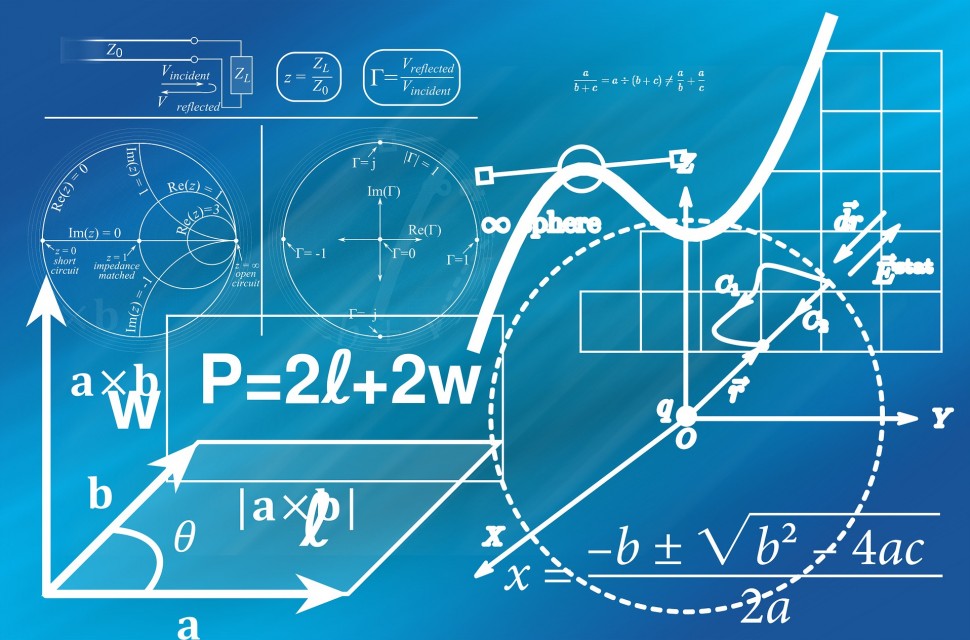
Symmetry is a fundamental mathematical concept. It is one of the first mathematical topics that is taught to students. In the teaching of any subject, visualization is the most crucial aspect. Symmetry is introduced so early in students’ academic life as it is one of the most comfortable concepts to visualize. Symmetry exists all around us, and people of all fields strive for the same in their domains. From art to design and from engineering to science, symmetry is utilized to represent beauty and perfection.
Understanding and learning symmetry is not as easy as it seems. There are various types of symmetry. Some of these types might not be evident to the human eye. Others very clearly are. Symmetry as a subject has been around for thousands of years. It has evolved and developed over time. It has given rise to other complex subtopics in mathematics. This article aims to provide a birds-eye view of the concept of symmetry. To do so, it seeks to answer a few questions.
What is symmetry?
What are the different types of symmetry?
What are some examples of symmetry in our daily lives?
Symmetry
Symmetry is a concept that is much akin to similarity. It is considered a more radical and strict form of similarity. It looks at the similarity in two equal parts of the same object. In the most basic form of symmetry, one half of an object is the exact mirror image of the other half. If two different shapes are identical to each other in any way, shape, or form, they are called to be symmetric.
Let’s take an example to understand it more clearly. Say you have a piece of paper that you fold once randomly. Now, on the crease that you have folded this piece of paper, you cut a random shape. Unfold the piece of paper. The resultant cut-out may be a symmetric shape.
The lines or creases along which the paper was folded are called the line of symmetry. A shape does not necessarily need to have just one line of symmetry; it may have many lines of symmetry. For example, if you had folded the paper twice instead of only once, along different lines, and then made a cut-out, the resultant shape would have had two lines of symmetry. Shapes may also have multiple lines of symmetry- for example, a five-point star has five lines of symmetry, one passing through each of its outer corners. A circle has infinite lines of symmetry. Every line that is coincident with the diameter of a circle is a line of symmetry of the circle. A shape that has no lines of symmetry is known as an asymmetrical shape.
Types of Symmetry
Symmetry can be one dimensional, two dimensional or three dimensional. There are types of symmetry that are as simple as a mirror image and can be recognized immediately. Symmetry can be about a point, or it can also be about an axis or a plane. There are different types of symmetry that have been studied and refined over the years. The most common forms of mathematical symmetry are the following.
Point Symmetry
Symmetry can fundamentally be about a single point in space. In this type of symmetry, other points that are at the same distance from a single point in space and on either side can be said to be symmetric. Such groups can make whole shapes of points. The point of symmetry doesn’t need to be a part of an axis of symmetry.
Reflectional Symmetry
This is a two-dimensional form of symmetry. Such a kind of symmetry can be noticed within a shape or two or more different closed shapes. Within a shape, if the shape can be divided into two parts by an axis, such that one part is the mirror image of the second part about that axis, the two sides may be said to be symmetrical. Among shapes, if there are two shapes in the same orientation at the same distance from a line, and the line forms a mirror from one part to the other, the line may be called an axis of symmetry. This type of symmetry is observed all around us, from the shape of leaves to our own bodies.
Planar Symmetry
As there is a line of symmetry for shapes in two dimensions, there are planes of symmetry for objects in three dimensions. If you can cut an object into two halves so that the halves are identical in every way, internal and external, the object may be called symmetric. The plane across which the object has been cut may be called the plane of symmetry of the object. Planar symmetry can often be hard to visualize since the interiors of objects are arduous to depict. Most of the symmetrical objects we use in our daily lives, such as suitcases, paper, windows, etc., are all examples of planar symmetry.
Rotational Symmetry
This is another moderately complex kind of symmetry that can often be hard to visualize. Rotational symmetry is not evident as it cannot be depicted with a noticeable entity such as a line or a plane. It requires the object on which symmetry is being tested to be visualized. In a nutshell, if an object is rotated, and it ends up looking identical more than once in a rotation of 360 degrees, it may be said to be rotationally symmetrical. Such objects may or may not have an axis of symmetry. An example of this kind of symmetry is the triskelion.
Translational Symmetry
Translational symmetry is the symmetry that cannot be visualized through a line or a plane of symmetry. In this kind of symmetry, consider two shapes. In these two shapes, if each point of one shape is at the same distance from a corresponding point on the other shape, the two shapes can be said to be translationally symmetrical. The two shapes are not mirrored images of each other; rather, they form an equidistant pattern. If reflectional symmetry is two arrows pointing toward each other, translational symmetry is two arrows pointing in the same direction.

The Importance of Symmetry in Our Everyday Lives
Symmetry is a fundamental concept in our everyday lives. Multiple domains accord a high degree of importance to symmetry. Some examples are given below.
Design
In the design domain, be it graphic design or product design, symmetry is equated with beauty and convenience. Symmetrical objects are very convenient to use. They can be used in various more ways than products that are asymmetrical in shape. Symmetrical designs are pleasing to the eyes and more ergonomic. Some examples of such objects are bottles, mobile phones, scissors, bags, adapters, and many more.
Manufacturing
In the world of manufacturing, the most critical consideration is ergonomics. The machines that are used by the workers must be as easy to use as possible. They must not require any greater exertion of force than is needed. Symmetry is a straightforward method for achieving these goals. For example, in a machine requiring the use of one lever with each hand, usage becomes much easier if both the levers are at the same distance from the operator than if one is farther away.
Architecture
As emphasized earlier, symmetric objects are better to look at. The same goes for architecture. Large buildings are much easier to construct if they are symmetric than if one side looks different from the other side. Most monuments across the world are symmetric, emphasizing that symmetry has been important for millennia.
Conclusion
This article aimed to introduce readers to the concept of symmetry and its many types, including point, reflectional, planar, rotational, and translational. Each of these types has its uses in various fields such as design, manufacturing, art, and architecture. In all of these fields, symmetry is not just important but practically essential. The crucial reason that symmetry is included in the design is ergonomics and convenience.
Geometry is one of the two pillars that mathematics stands on. Hence, for any student interested in mathematics and who wishes to make a career in the subject, being clear about geometry fundamentals is extremely important. Students can subscribe to geometry made easy with Cuemath to gain beginner and advanced problems from various geometry concepts. Cuemath will help you clarify the fundamentals of these concepts and become real masters of every subject you survey.






